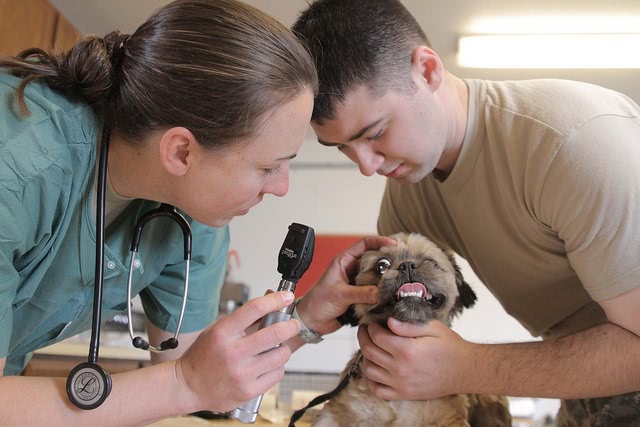Key Takeaways
- The average time it takes to complete medical school, from undergrad to residency, is 10-12 years.
- The timeline to becoming a doctor includes earning a bachelor’s degree, passing the MCAT exam, enrolling in medical school, completing medical school, passing the USMLE for licensure, completing residency, applying for your medical license, and obtaining your board certification in your specialty.
- The average cost to attend medical school is $238,420 but there are many scholarships and financial aid options to help you out along the way.
 Ask five people, ‘How long is medical school?’ and chances are you’ll get five different answers—all technically correct! Exactly how long it takes to become a doctor will depend on the specialty you choose, but at minimum, you’re looking at 10 to 12 years of school and training before you can officially wear the white coat. And medical school is just one part of your journey. You’ll also have to complete your residency program which typically lasts between three and seven years.
Ask five people, ‘How long is medical school?’ and chances are you’ll get five different answers—all technically correct! Exactly how long it takes to become a doctor will depend on the specialty you choose, but at minimum, you’re looking at 10 to 12 years of school and training before you can officially wear the white coat. And medical school is just one part of your journey. You’ll also have to complete your residency program which typically lasts between three and seven years.
So, what does the full path to becoming a doctor look like? From undergrad to residency, here’s a step-by-step look at how long it takes to officially practice medicine with your doctorate degree. It’s a long road, but it’s worth it.
The Timeline To Becoming a Doctor
The path to becoming a doctor is long and rigorous, but also incredibly rewarding. It requires several years of hard work and commitment to complete all the requirements and qualify for licensure—which is a mandatory requirement. If you’re considering becoming a doctor, be prepared to spend at least 10 to 12 years studying and training for this career.
Below, we are covering the key steps to becoming a doctor: completing your basic and advanced education, training, exams, residency, and obtaining licensure.
Step 1: Earn a Bachelor’s Degree
Earning your bachelor’s degree is the first step toward becoming a doctor. This will take you four years to complete as a full-time student. Although you can choose any major (science-related or not) you will still be responsible for completing certain prerequisite courses to qualify for medical school. While the specific course requirements can vary among medical schools, the vast majority require applicants to complete these prerequisites:
Remember to always research your top medical schools in advance so you know exactly what they require. Some medical schools may require you to complete courses in Biochemistry, Humanities, or Genetics. You’ll want to know this sooner rather than later to ensure you have time to complete all your courses.
Step 2: Pass the MCAT
You must take and ace the Medical College Admission Test (MCAT) before you can even apply to medical school. This standardized test is administered by the Association of American Medical Colleges (AAMC). It will test your understanding of prerequisite subjects, problem-solving skills, and critical-thinking skills.
The MCAT is a multi-section interdisciplinary exam that lasts approximately 7 hours and 30 minutes with breaks. It includes these four sections:
- Biological and Biochemical Foundations of Living Systems
- Psychological, Social, and Biological Foundations of Behavior
- Chemical and Physical Foundations of Biological Systems
- Critical Analysis and Reasoning Skills
According to a report published by the AAMC, the average MCAT score for students who got into U.S. MD-granting medical schools for the 2023-2024 academic year was 511.7. The higher you score, the better your chances of getting into your top medical school.
Step 3: Enroll in Medical School and Earn Your Medical Degree
When you’ve successfully passed the MCAT, you can start applying to your list of medical schools! Medical school is highly competitive. However, you still have a good chance of getting in if you’ve completed your prerequisites, maintained a high GPA, and passed the MCAT. According to the American Association of Medical Colleges (AAMC), 44% of applicants were accepted into medical school for the 2023-2024 school year.
And when you’re shortlisting potential schools to apply to, don’t overlook these reputable medical schools that are easy to get into. This is especially important if you’ve fallen short of the target grade or score that some of the more competitive schools are looking for.
Once you’re accepted, here’s what to expect during med school:
- It lasts four years and focuses on general medicine.
- You’ll spend the first two years learning anatomy, pharmacology, and medical ethics in classroom settings and labs.
- The later years include hands-on, supervised practical training in clinics and hospitals.
- You’ll participate in clinical rotations. These will include specialized areas like internal medicine or pediatrics. This is where you will learn to diagnose and treat patients in real-life situations.
Step 4: Pass the Initial Steps of the USMLE
After completing your first two years of medical school, you’ll be eligible to take Step 1 of the U.S. Medical Licensing Examination (USMLE). This exam is broken into seven, 60-minute sections that test your knowledge and comprehension of basic sciences. It is the first step on your journey to medical licensure.
You’ll take Step 2 CK of the USMLE in your fourth year of medical school. This exam is broken into eight, 60-minute sections. It focuses on clinical sciences, patient-centered skills, and your ability to apply medical knowledge.
Step 5: Choose Your Medical Specialty and Enter “The Match”
You’ll be able to choose your medical specialty in your fourth year of medical school. Most students make their final decision in their last year—usually after passing the first two steps of the USMLE.
After deciding on your specialty, you’ll enter The Match, a system run by the National Resident Matching Program (NRMP). It is an independent, non-profit organization that helps fourth-year medical students match with a residency program through a ranking-based system. The Match uses an algorithm to ensure the process is fair, efficient, transparent, and reliable for both medical students and residencies.
Step 6: Complete Your Residency Program
Completing residency training in your chosen specialty is mandatory. Medical residency programs provide in-depth practical training and experience in a specific area of medicine. Throughout your residency, you’ll hone your knowledge and practice in your chosen specialty as you work with patients under the supervision of experienced physicians.
A medical residency program can vary in duration from three years to seven years, depending on the specialty. For example, a residency in primary care usually takes around three years—think family medicine or pediatrics. On the other hand, residencies in more complex specialties can take around five to seven years—think neurology or cardiology.
Step 7: Complete the Last Step of the USMLE Requirements
At some point during your residency, you’ll take Step 3 of the USMLE. This is the final exam in the USMLE sequence and evaluates whether you are ready to practice general medicine with no supervision. It is a two-day exam. Day one lasts seven hours with 232 multiple-choice questions. Day two lasts nine hours with 180 multiple-choice questions and 13 case simulations. This exam focuses on patient management and covers broad, general medical knowledge. Once you pass Step 3, you’ll be able to apply for your medical license.
Step 8: Apply for Medical Licensure
To practice as a physician, you must apply for a medical license in the state you wish to practice. In addition to reviewing your exam scores, medical boards also conduct background checks. While licensing requirements vary by state, most states require that you:
- Graduate from an accredited medical school.
- Complete a residency program in your medical specialty.
- Pass either the U.S. Medical Licensing Examination (USMLE) for MDs or the Comprehensive Osteopathic Medical Licensing Examination (COMLEX-USA) for DOs
This is the exciting part! When you get your license, you’ll officially transition from medical student to practicing physician!
Step 9: Obtain Board Certification Within Your Medical Specialty or Subspecialty
Being board-certified is not a legal requirement to practice medicine. However, earning board certification demonstrates advanced expertise in a specific area of medicine. As a board-certified practitioner, you will:
- Be recognized as an expert in your field.
- Have a higher earning potential.
- Gain additional career advancement opportunities (some hospitals only hire physicians who are board-certified).
To become board-certified, you’ll need to pass a series of written and oral exams that test your knowledge in your discipline. You can apply for board certification through the American Board of Medical Specialties (ABMS), the American Board of Physician Specialties, or the American Osteopathic Association.
How Much Does Medical School Cost?
The average total cost of medical school is $238,420. Considering it takes four years to complete medical school, that’s an average annual cost of $59,605 in tuition costs. You’ll also need to consider all other costs such as test fees, application fees, cost of textbooks, and cost of medical instruments.
Fortunately, there are resources available to help medical school students get financial aid:
- Complete the FAFSA or Free Application for Federal Student Aid: This is what qualifies you for financial aid, Federal Direct Unsubsidized Loans, and Federal Direct Graduate PLUS Loans.
- Explore scholarships and grants: This is money you don’t have to pay back.
- Look into merit scholarships and need-based grants: Many medical schools will offer these to students in need. Contact different schools’ financial aid offices for eligibility requirements and application formalities.
- Research medical associations and nonprofit organizations: Many offer various forms of financial aid. Three great associations that offer scholarships and grants to medical students are the American Medical Association, the American Medical Women’s Association, and the American Podiatric Medical Association.
What Classes Should I Take for Medical School if I’m Still in High School?
Colleges and universities do not require you to take certain high school classes for medical school. However, it’s still a great opportunity to challenge yourself in preparation. Opt for classes that develop your skills in communication, analytical thinking, and problem-solving. Some examples are:
- Science classes like biology, chemistry, and physics.
- Math classes like algebra, geometry, statistics, and calculus.
- A foreign language class.
- Any Advanced Placement (AP)
If you love being a student, helping others, and solving problems, then the path to becoming a doctor may be for you. Yes, medical school is long—we’re talking 10+ years—but ask any doctor, and they’ll tell you it’s worth it. The chance to make a difference in people’s lives often outweighs the time it took to get there. It might not always be easy, but when you have a dream, no road is too long. If this is the path for you, embrace it. Best of luck, future doctor!
Wondering where you want to study for your undergrad? Try using College Raptor’s FREE College Match tool to match with schools based on your location, GPA, test scores, and more.






